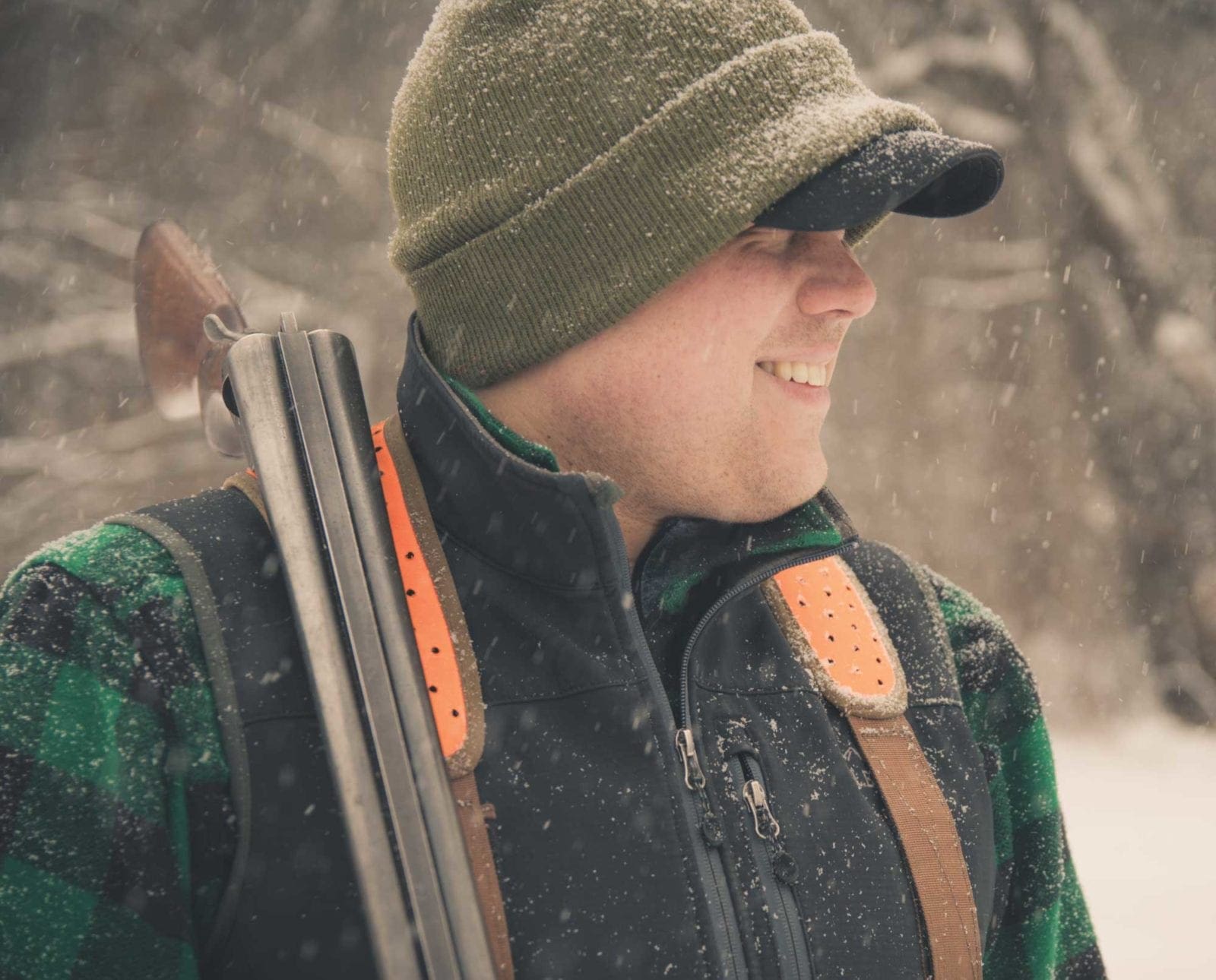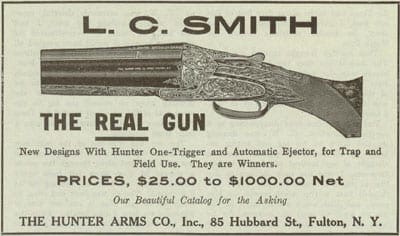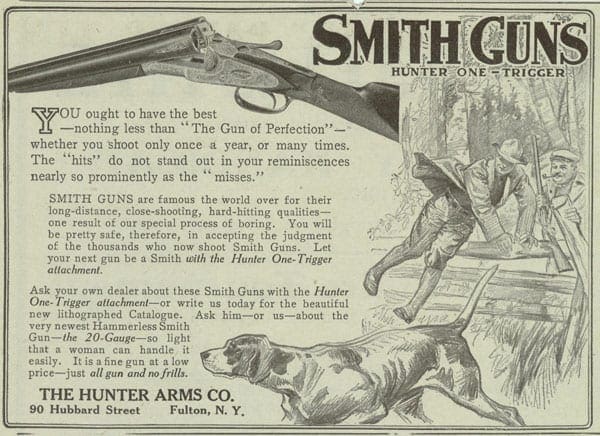Home » Firearms and Shooting » Shotguns » L.C. Smith Shotguns – A Look into the History of Double Guns
L.C. Smith Shotguns – A Look into the History of Double Guns

Joel Penkala is an Upland Bird Hunter and outdoors enthusiast…
Exploring the shotgun manufacturer famous for their American sidelock
L.C. Smith is easily one of the most recognizable names in the world of American double guns. They are also unique in design when compared to many of the other popular doubles of their time and are inarguably tied to wingshooting history in the States.
W. H. Baker and the brothers Leroy Smith and Lyman Cornelius Smith began making guns in partnership in 1879 under the Baker name. Their offerings included side-by-side shotguns with external hammers and three barrel guns — side-by-side shotgun barrels over a rifle barrel, commonly referred to as drillings. In 1880, W.H. Baker and Leroy Smith would go on to create the Ithaca Gun Company, leaving L.C. Smith to make guns under the Baker name until 1889. At that time the company passed to John Hunter of Fulton, N.Y., and the production of the L.C. Smith Gun that most folks are familiar with began at length. During this period of production, options and variety were added to the lineup, including a number of grades, gauges, stock configurations, ejectors, and trigger options.
Though company ownership changed hands over the course of time, the next significant purchase came in 1945 when the Marlin Arms company purchased the L.C. Smith name. Production continued for four or five years until a portion of the factory collapsed, causing an eventual shutdown and the suspension of production. The Marlin Arms Company did produce a few guns in the late 60s and early 70s, though production was very limited.

Models, grades and options for the L.C. Smith
Though a number of models were available in early Baker Vintage production as well as the L.C. Smith Baker, most of these models would be impractical for today’s wingshooter. Most of the early guns were either hammer guns or had Damascus twist barrels, and were built to handle the common loads of the times. You would not want to put a modern 2¾ inch sporting load through one of those vintage 1800s guns. For most wingshooters there is romance in shooting old guns, but one does question the efficacy of using a hammer gun in real-world bird hunting scenarios. The same goes for the risk of shooting Damascus steel barrel guns. There is a time and place for keeping history alive, no doubt, and I have a share of very old guns — hammers and Damascus included. But safety is of particular importance when we consider all the other factors at play when wingshooting.
“Welcome to the hundreds of thousands of shooters who have joined the ranks of L.C. Smith gun owners during the past 50 years! Your gun bears the most famous name in shotgun history. Shoot it with pride and confidence.”
An excerpt from the L.C. Smith Manual
Pictured Above: A pre-1913 L.C. Smith No. 2 with ejectors, refereed to as model 2E. Image courtesy of Dogs and Doubles.
Early L.C. Smith guns, that is to say guns from the pre-1913 date, were graded with numbers or letters, ascending/descending and covering a variety of options available at the time. The earliest were described as ‘qualities’ rather than grades from this vintage. Needless to say, the latter system was in place until 1913 when the change in hands resulted in new options for Fulton Arms L.C. Smith guns.
The most common of these became the ‘Field’ grade. Field grade guns were stamped as such on the water table of the gun. In addition to Field Grade, the company produced Ideal, Skeet, Trap, and Specialty guns ranging from $25 to $1000. These five options represent the most commonly found L.C. guns and are what one would likely find on the gun rack at a local shop. There were additional high grade guns made, but production of these guns was limited to under 1000 of any particular model and as such they are a rarity.
Interesting facts about L.C. Smith
L.C. Smith was one of the only American makers to produce a sidelock shotgun, where the internal mechanisms of the gun were fixed to the side plates that extended back from the action. There were few other American makers who did the same, but none with the same clout as L.C. Smith. L.C. was the first to offer auto-ejectors in 1892. They were also one of the first gunmakers of the time to offer a single trigger, their “Hunter One-Trigger”.

The L.C. Smith Collectors Association
No vintage double gun company is complete without some kind of collectors club. The organization is active and membership includes a quarterly publication, the L.C. Smith Journal. Membership is $40 annually and their mission described below.
“The L.C. Smith Collectors Association was formed to (1) stimulate and educate members and the public in their knowledge of the history and production of the L.C. Smith shotgun; (2) encourage the value of good sportsmanship to shooter and collector members and the public; (3) promote a positive, responsible use of firearms to members and the public; and (4) encourage creation of an L.C. Smith museum.”
Find out more about the club at: https://lcsca.clubexpress.com/
Joel Penkala is an Upland Bird Hunter and outdoors enthusiast from New Jersey. His love of all things upland has led him to travel and hunt around the United States and fostered his affinity for double guns and bird dogs. He runs English Setters in his home covers chasing Woodcock, Grouse, and Pheasants.






